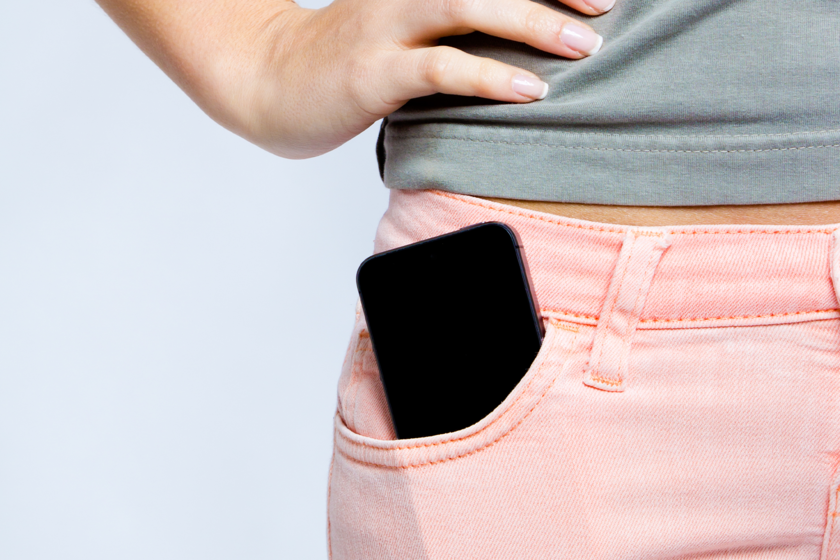A trend a little less than two months ago on social networks called claw grip It showed how women held several objects – mild, keys, wallet – in one hand, because the pockets are so small that there are hardly any pañuelos package. What seems a fun occurrence is, in fact, a daily photo of inequality in clothing design.
“Has pockets”. It looks like a pretty silly phrase, but among women finding pockets in the pants is an almost impossible mission. The expression has become the forced comment, already turned into a cultural meme. In social networks, frustration has become digital activism. With hashtags like #wewantpockets, thousands of users denounce the absurdity that in the 21st century it is still exceptional to find a garment with useful pockets.
The data reflects it. According to a study by The Pudding, women’s pockets are on average are 48% shorter and 6.5% narrower than man’s. In fact, just 40% of female front pockets can save a smartphone. The consequence is in sight: pockets unable to put a phone, a small wallet or even the full hand.
The contrast is even more ironic if we think that, in parallel, many male designers are drawing “fashionable” – crossed, tote bags, bandits -, that is, men begin to Buy bags as a voluntary accessory, while women continue to claim pockets out of necessity.
More than fashion: autonomy. The pocket is not a simple aesthetic detail: it allows you to leave home without a bag, with your hands free, without depending on loading an accessory to carry the basics. In a report for the BBC they have detailed that in feminist history it has been claimed as a tool of freedom. At the beginning of the 20th century, the British suffragists summed up it in a clear slogan: “votes and pockets,” recalls Caroline Stevenson, director of the Cultural and Historical Studies Program of the University of the Arts of London. “It is interesting that a pocket became one of the symbolic forms of counteracting the desire for women’s independence and freedom,” adds Elizabeth Evitts Dickinson, author of a new biography about American designer Claire McCardell, a pioneer in trying to solve this problem from fashion. For them, having their own space in the clothes equal independence, not to depend on a husband or a bag.
The case of little Golden Cameron, eight years old, demonstrates it: indignant because girls’ school pants had no pockets, he wrote to the Sainsbury’s supermarket chain asking for a solution. After viralizing its letter, the company modified its designs. The episode, counted in another BBC report, shows how even girls detect textile inequality from an early age.
A problem with historical roots. In the seventeenth century men enjoyed pockets reited in pants and jackets, while women wore small bags tied to the waist under their skirts. That difference implied more than fashion: a woman’s value objects were hidden under layers of clothes, quickly inaccessible and dependent on the design of the dress.
The situation worsened in the nineteenth century, when the tight fashion that directly eliminated female pockets was imposed. “Depriving pocket women was also depriving them of liberty,” explains The Atlantic. In addition, after the years, fashion reinforced the stereotype that the female body should prioritize aesthetics over functionality. Christian Dior verbalized it in 1954 in a phrase that still resonates: “Men have pockets to save things, women for decoration.”
The catwalks are pronounced. And it is that the debate continues to speak today. Some brands, such as Chanel or Saint Laurent, have been incorporating pockets as a gesture of modernity for some time. In the 2022 Oscar, Penelope Cruz surprised with a chanel of pockets, something that stood out as an unusual detail on the red carpet. In parallel, independent brands such as The Pockets Project or sportswear firms have made an emblem of pocket: leggings with mobile space, cocktail dresses with secret pockets.
But in Fast Fashion reality is another: false pockets, useless seams or ridiculous sizes. The problem is costs, as the BBC points out: adding real pockets implies more fabric and more clothing time, something that clashes with the adjusted margins of fast fashion.
The pocket as a social reflection. The debate, in reality, is not just textile. An interesting report by New York Times, deepens more than the absence of pockets is linked to bag dependence. In other words, the bag sector is a global market that moves more than 8,000 million dollars. Fashion seems to have pushed women towards mandatory bag consumption, while men leave home with their hands.
It is no accident that in 1937, when Diana Vreeland assumed as editor of Harper’s Bazaar, she proposed to dedicate an integer number of the magazine to the pockets. In his autobiography DV remembers that the idea was immediately discarded by the pressure of advertising: “Do you realize that our bags by bags are millions a year?”, Its director warned. The anecdote reveals to what extent economic interests also weighed in what seemed like a simple clothing detail. In itself, the pocket is a mirror: it shows how for centuries the male fashion privileged functionality, while the female sacrificed autonomy in the name of aesthetics.
Everything remains the same. Five centuries after men released sewn pockets and women were relegated to hidden bags, the debate is still in force. What is expressed in networks with memes, hashtags or the uncomfortable gesture of the claw gripactually points to a deep issue: who has the right to dress with autonomy and who is still conditioned by designs that prioritize aesthetics and the market on equality.
Therefore, when a woman proves a dress, pants or skirt, and exclaims: “He has pockets!”, He is not celebrating only a sewing detail. He is celebrating a small triumph in a long struggle: that of being able to keep the same, on the same.
Imagen | FreePik
WorldOfSoftware | From six -digit liftings to a German Viper Serum: Hollywood’s new obsession is “liquid surgery”











